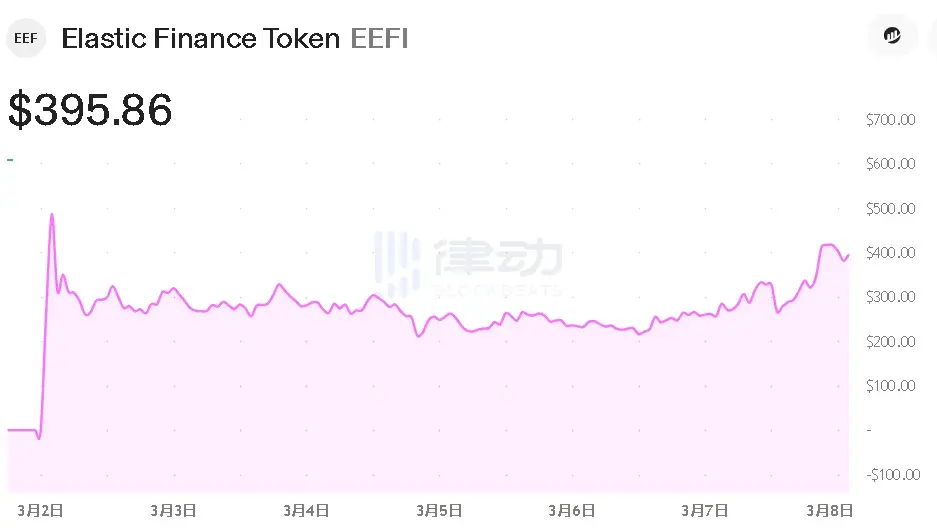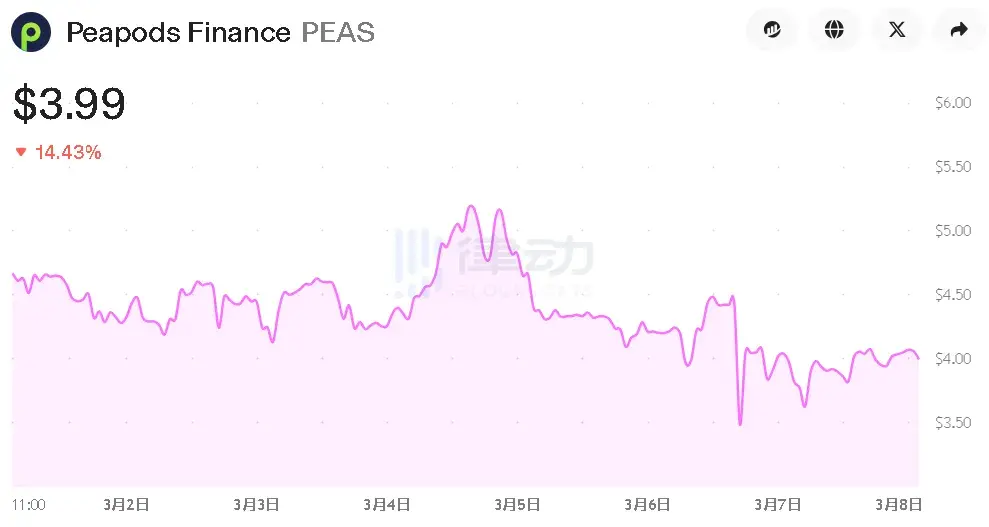After the Ponzi scheme collapse, can the OHM team bring back the wealth code?
The market enthusiasm is still revolving around memes. Just after one weekend, the new meme coin YES on Blast triggered FOMO in the community, and even Adam Cochran (AC), a partner at Cinneamhain Ventures, discussed it with the community on Discord and read all the code of Baseline.
Baseline's predecessor, Jimbos protocol, was renamed last year and announced its intention to create a permissionless algorithmic market maker protocol. This protocol expands POL (Protocol Owned Liquidity) and uses smart contracts to manage token liquidity within a centralized liquidity pool. This market-making mechanism also allows YES to achieve a "rise without fall," no liquidation mechanism, and a Ponzi effect with multiple leverage.
The concept of POL originates from Olympus DAO (OHM), which is why many people believe Baseline has close ties with the Olympus team. However, Berachain founder Smokey The Bera intends to clarify the relationship between OHM and Baseline, arguing that projects borrowing the idea of POL should not rely on OHM for fame but should focus on building their own.
If you follow DeFi, you may notice that in this round of stories, phrases like "former OHM core member" or "former OHM developer" seem to have become the new wealth password.
From Ponzi Beginnings to Price Collapse: The Former DeFi 2.0 Star OHM
Olympus is a decentralized reserve currency protocol based on the OHM token, with the vision of becoming a new type of reserve stablecoin.
During the DeFi summer at the end of 2020, various decentralized platforms launched "liquidity mining." Before OHM introduced POL, countless projects could not avoid liquidity instability issues, but POL managed to become the master of its own liquidity through new staking and Bond mechanisms. OHM once held over 99% of OHM-DAI bond liquidity, leading DeFi into the 2.0 era.
Under the different choices of incentives from staking and Bond, OlympusDAO gave birth to the 3 v3 game theory model, the specifics of which can be referenced in "Interpreting Ve(3, 3), 'Curve + Olympus'." In no time, the first textual meme (3, 3) spread across Twitter, imitated by countless communities. This set of 3 v3 games also allowed OHM's APY to reach 70,000%, spawning a plethora of forks on other public chains, with "3, 3" evolving into "4, 4" and even "9, 9," making APYs in the thousands seem trivial.
Related reading: "APY 70,000%, DeFi 2.0 Dominated by OHM Forks"
The ultra-high APY is a natural factor attracting funds, but it also brings inflationary pressure, leading to increasing speculation about whether OHM is a Ponzi scheme. Ultimately, OHM faced massive sell-offs, causing its price to drop over 98%. An algorithmic coin that fell from its peak finds it hard to return to its original level without a backer to pump it.
After the price collapse, OlympusDAO lowered the staking APY of OHM and stated that it would focus on stability, sustainability, and widespread adoption in the future. Additionally, OlympusDAO changed the APY (annual percentage yield) to BR (base rate), representing the annual inflation rate of OHM.
In the article "Can Algorithmic Stablecoin OlympusDAO Solve the Death Spiral Problem?," it is explained that OHM's price does not need to be pegged to a specific asset; it uses DAI as a reserve, theoretically backing one OHM with one DAI, valued at 1 dollar. Of course, it is precisely because of its non-pegged nature that some view it as a non-sovereign currency.
Starting from Ponzi beginnings, leading DeFi 2.0, and experiencing a collapse, it seems OlympusDAO has truly completed all its missions and "disappeared" in the bear market.
Crypto Projects Related to OHM
Although there are few voices from OlympusDAO now, the 3, 3 model and POL mechanism it once drove continue to influence the DeFi space. Just like the explosive popularity of YES, many projects still bear the shadow of the OHM team or are based on the Ponzi effect, with phrases like "former OHM core member" and "former OHM developer" seemingly becoming one of the reasons for project ascension.
Berachain
Berachain, known as the Bear Chain, has sparked discussions in the crypto community again due to the recent launch of its public testnet "Artio." The extremely cult-like community has attracted attention from Degen individuals in the circle since its launch at the end of 2021.
According to Berachain co-founder Smokey, the team consists of early OHM investors who met in the Olympus DAO community. Initially, this was just an NFT project among community members. To pay homage to OHM's Ponzi mechanism, the first NFT was named Bong Bears, and "Bera" was a deliberate misspelling to honor the crypto old meme "Hodl."
Berachain has now developed into a high-performance EVM-compatible blockchain, built on a Proof-of-Liquidity (PoL) consensus mechanism, aiming to adjust network incentives by enhancing the synergy between Berachain validators and the project ecosystem. Additionally, Berachain's technology is based on Polaris, a high-performance modular framework for building EVM-compatible chains on top of the CometBFT consensus engine.
Related reading: "Exploring New Public Chains: Berachain's Technology, Community, and Ecological Projects"
On April 20, Berachain completed a $42 million financing round, led by Polychain Capital, with participation from OKX Ventures, Hack VC, Dao 5, Tribe Capital, Shima Capital, Robot Ventures, Goldentree Asset Management, former partners of Dragonfly Capital, Celestia founder Mustafa Al-Bassam, Tendermint co-founder Zaki Manian, and 20 other DeFi project founders.
Eefi Finance
Eefi Finance is an elastic treasury protocol built on AMPL, also using the OHM token paired with EEFI. According to Eefi Finance's official website, its ecological partners also include OHM, claiming community member participation.
Elastic Finance launched the yield token EEFI, which can amplify and extend yields under all market conditions, and its (E, E) game theory is an upgrade of the (3, 3) game theory. The total token supply is 170,000, with 25,000 allocated to an LBP event held in collaboration with Olympus DAO and Bond Protocol. According to Uniswap data, as of the time of writing, the price of EEFI is $395.86, with a 24-hour increase of 35%.

Peapods Finance
Peapods is a decentralized, permissionless, trustless on-chain volatility mining protocol with zero reliance on oracles or external price feeds. Peapods Finance has launched a new DeFi model called Volatility Farming, allowing users to leverage the volatility of the cryptocurrency market to unlock yield opportunities for liquid assets.
Peapods uses OHM instead of DAI as the base trading pair for all listed tokens, and the community frequently interacts and collaborates, recently receiving continued support from OHM as it prepares to launch on Arbitrum. According to Uniswap data, as of the time of writing, the price of PEAS is $395.86, with a 24-hour increase of 4.2%.

Peapods Finance allows users to create weighted and unweighted index positions called "Pods" on Ethereum without permission. By making these positions liquid, anyone can easily gain exposure to popular asset allocations. Users can stake these positions to earn deflationary PEAS tokens, which capture value by charging fees based on the expansion or contraction of Pods' supply and the ongoing arbitrage between Pods' prices and their underlying assets.
On January 26, Peapods Finance announced the integration of pOHM as a core component of its new v2 Green Arrow pod, fundamentally enhancing the liquidity mechanism of all Pods. The new pOHM integration provides an option for all Pod products to now choose to use pOHM as a liquidity pairing asset. Pods paired with pOHM inherit the superior LP characteristics of OHM beyond pegged assets, including reduced impermanent loss (IL) and asset appreciation. The free-floating nature of OHM also provides greater arbitrage opportunities for Pods, thereby enhancing the volatility mining of Pods.









